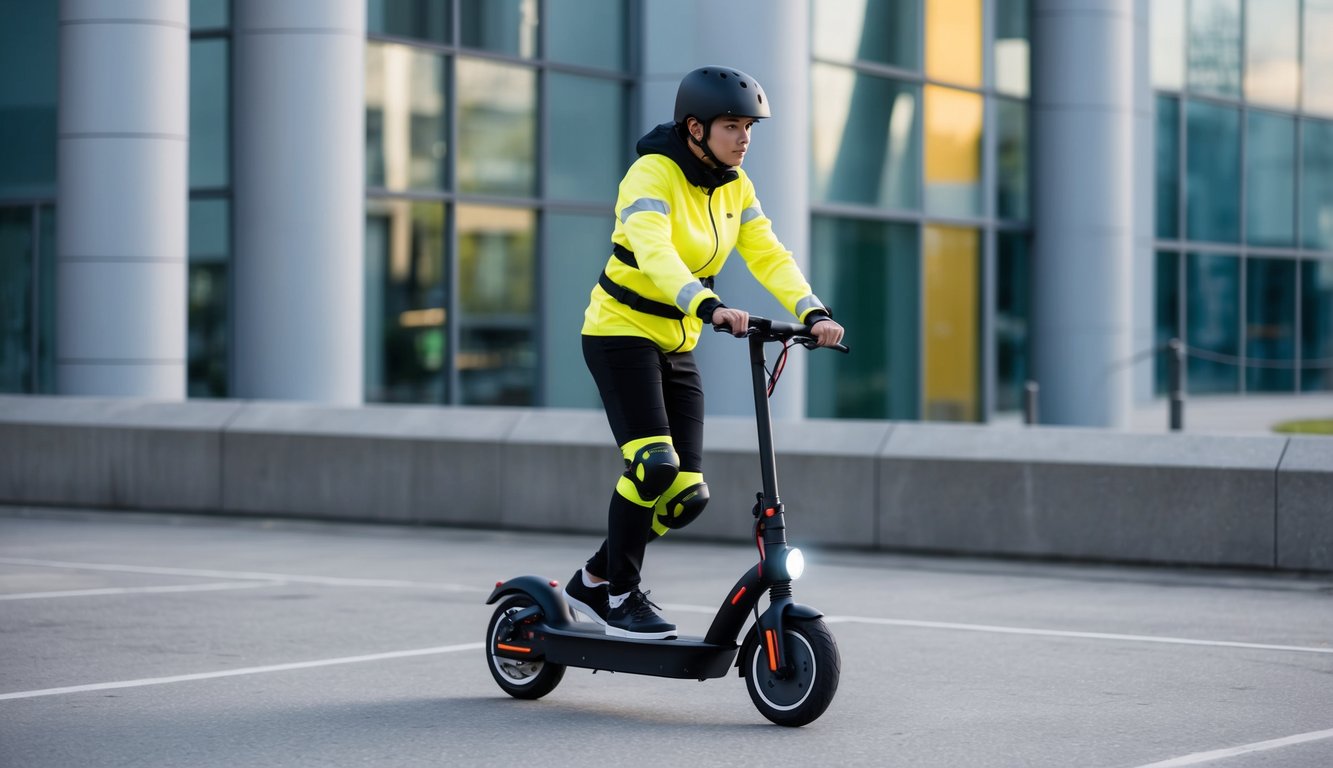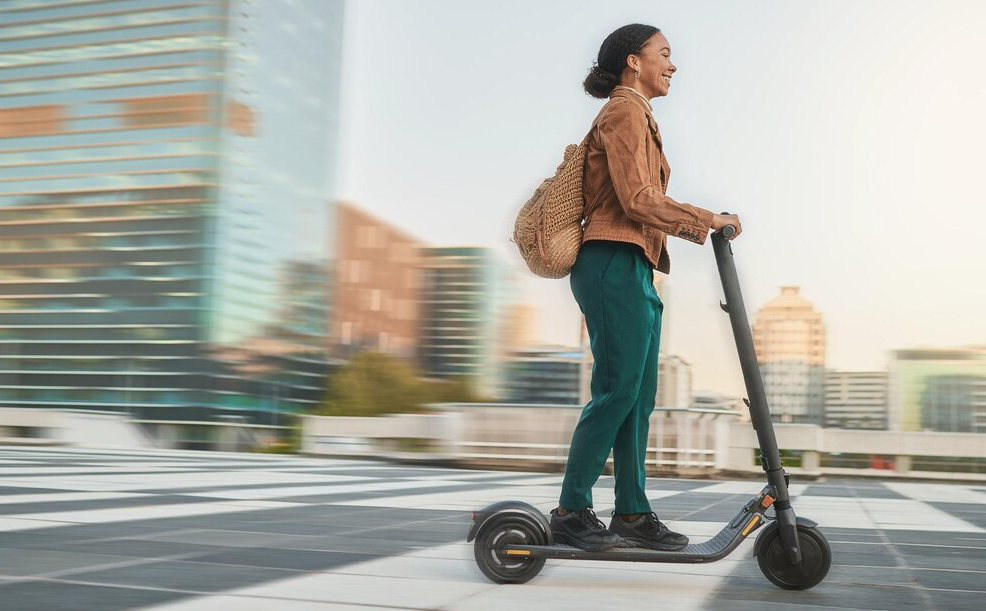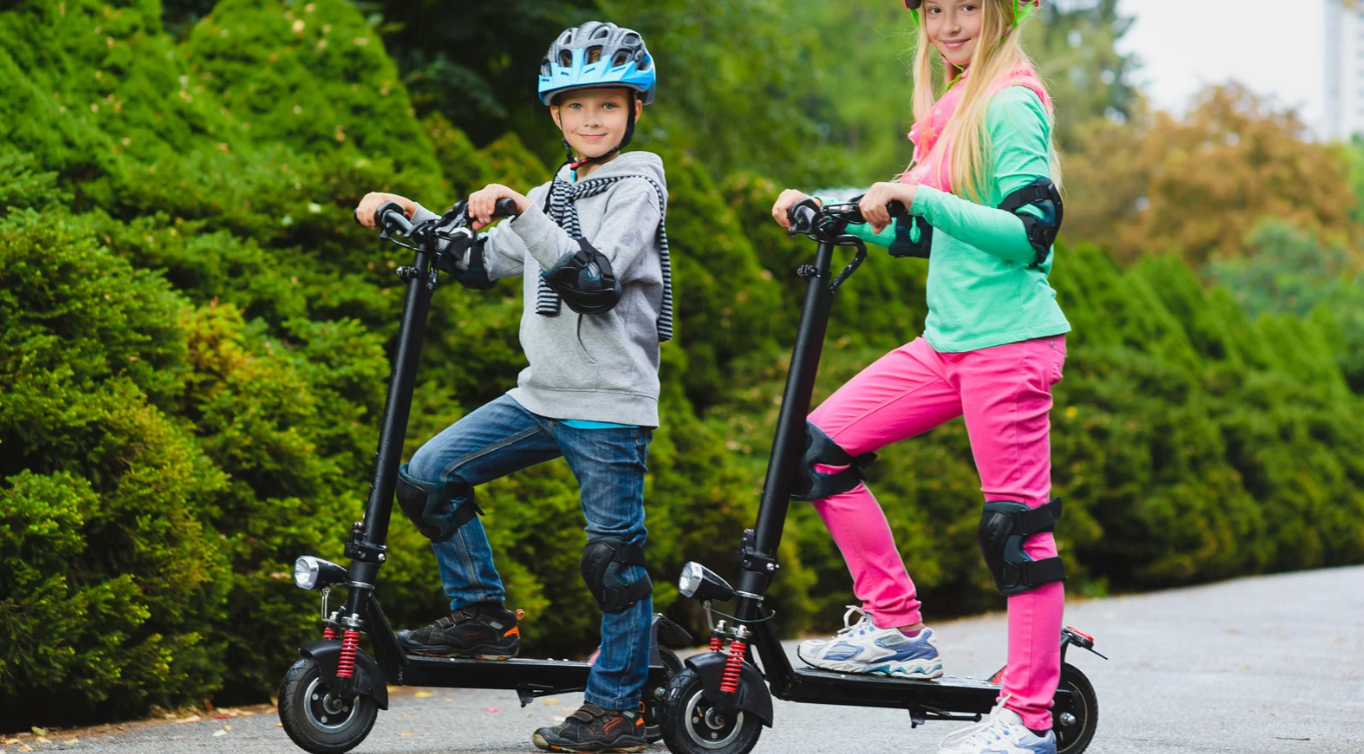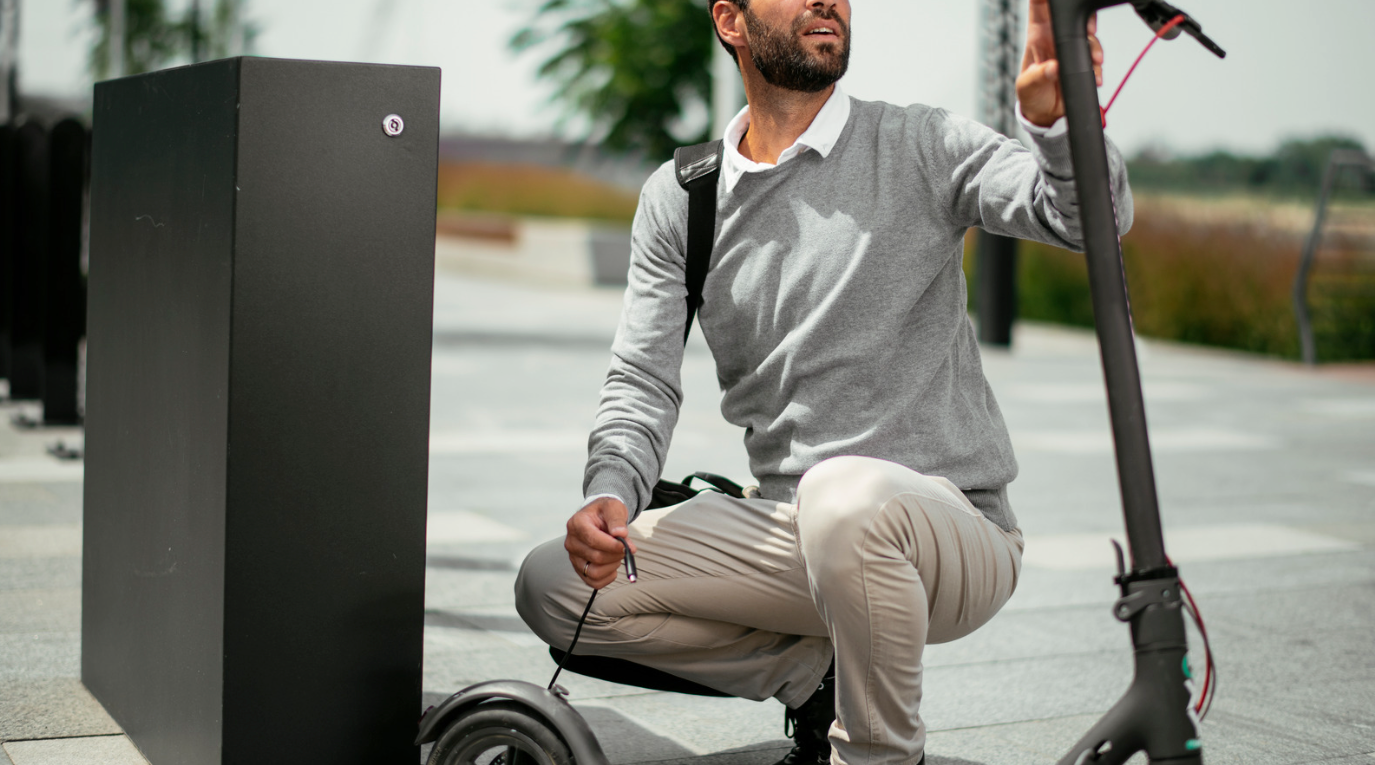Electric scooter and electric bike options continue to expand as more people seek eco-friendly transportation alternatives.
Circooter electric scooters offer cutting-edge technology in this growing market, but many riders struggle to choose between e-scooters and e-bikes for their daily needs.
Are you wondering which option better suits your lifestyle, budget, and commuting needs? Read on to discover the key differences that will help you make the right choice!
Key Differences Between Electric Scooters and Electric Bikes
The most obvious difference between electric scooters and electric bikes is their design. E-bikes look like traditional bicycles with added motors, while e-scooters feature a standing platform with handlebars.
Electric scooters are typically more compact and lightweight, making them easier to fold and store in tight spaces. Most Circooter models weigh between 25-40 pounds, whereas e-bikes often exceed 50 pounds.
Storage requirements vary significantly too. E-scooters can fit under desks or in closets, while e-bikes usually need dedicated parking spaces or wall mounts.
Riding position differs considerably - e-bikes allow seated riding like traditional bicycles, while e-scooters require standing (though some models offer optional seats).
Performance Comparison: Electric Scooters vs Electric Bikes
When comparing raw performance metrics, electric bikes typically outperform electric scooters in several key areas, though each has distinct advantages.
|
Feature |
Electric Scooters |
Electric Bikes |
|
Top Speed |
15-25 mph |
20-28 mph (varies by class) |
|
Range per Charge |
10-40 miles |
20-60 miles |
|
Charging Time |
3-6 hours |
3-8 hours |
|
Hill Climbing |
Relies entirely on motor power |
Better with gearing systems and pedaling option |
|
Carrying Capacity |
220-300 lbs typically |
250-400 lbs typically |
|
Off-Road Capability |
Limited to smooth surfaces |
Handles varied terrain with proper tires |
|
Battery Life |
300-1,000 charge cycles |
500-1,000 charge cycles |
|
Weather Performance |
Most models struggle in wet conditions |
Generally more stable in adverse weather |
Actual range depends heavily on rider weight, terrain, riding mode, and weather conditions. Some premium models may exceed these ranges.
Battery cycle life varies significantly by battery quality and technology. Premium models of both vehicle types often achieve the higher end of this range.
Some premium e-scooters with larger tires and higher IP ratings perform better in wet conditions.
While e-bikes generally offer greater range and versatility, e-scooters excel in urban environments where compactness and maneuverability matter more than raw power or distance.
Looking for convenience? Check out our electric scooters with removable batteries. Charge anywhere, anytime!
Cost Analysis: Electric Scooters vs Electric Bikes
The initial investment differs considerably between these options. Quality electric scooters typically range from $300-$1,500, while electric bikes start around $800 and can exceed $5,000 for premium models.
Maintenance costs favor e-scooters, which have fewer moving parts and simpler mechanics. E-bikes require regular maintenance of chains, brakes, gears, and tires, similar to traditional bicycles.
Battery replacement represents a significant future expense for both vehicles:
- E-bike batteries cost $300-$800
- E-scooter batteries typically range from $150-$500, though prices fluctuate with technology improvements and market conditions
Insurance requirements vary by location, but e-bikes more commonly require coverage than e-scooters in many jurisdictions.
Wondering about electric scooter prices? Our guide breaks down costs for every budget level.
Practicality Factors: Daily Use Comparison
Your daily commuting needs and storage situation will heavily influence which option provides the most practical solution for your lifestyle.
|
Factor |
Electric Scooters |
Electric Bikes |
|
Urban Commuting |
Excellent for navigating tight spaces |
Better for longer distances with bike lanes |
|
Public Transit Integration |
Can be folded and carried onboard |
Often restricted during peak hours |
|
Storage at Destination |
Fits under desks or in closets |
Requires dedicated parking space |
|
Weather Resistance |
Challenges in wet or snowy conditions |
Better stability in adverse weather |
|
Theft Risk |
Lower risk as easily brought indoors |
Higher risk due to outdoor parking needs |
|
Multi-Modal Travel |
Easily combines with buses, trains |
More difficult to combine with transit |
|
Parking Availability |
Can use pedestrian spaces in some areas |
Requires bike racks or dedicated parking |
|
Grocery/Errand Running |
Limited carrying capacity |
Better with optional racks and baskets |
Consider your typical weekly routine when evaluating practicality. Those who frequently combine transportation modes or lack storage space will generally find e-scooters more convenient.
Comfort and Riding Experience Between Electric Scooters and Electric Bikes
The physical experience of riding these vehicles differs dramatically, affecting both short trips and longer journeys in significant ways.
Your physical comfort preferences matter significantly—if standing for extended periods is uncomfortable, an e-bike will likely provide a better long-term experience despite its larger size.
Experience smoother rides with our dual suspension electric scooters. Tackle any urban terrain with confidence!
Legal Considerations for Electric Scooters and Electric Bikes
Electric scooter and e-bike regulations vary significantly across jurisdictions, creating a complex legal landscape for riders to navigate:
• Classification differences
E-bikes typically fall into three classes with established regulations:
- Class 1: Pedal-assist only, no throttle, max speed 20 mph
- Class 2: Throttle-assisted, max speed 20 mph
- Class 3: Pedal-assist only, max speed 28 mph, age restrictions apply
• Road access regulations
E-scooters are often restricted from sidewalks and sometimes from bike lanes
- E-bikes generally have broader access to bike infrastructure
- Both may be prohibited on certain high-speed roadways
• License requirements
- Most jurisdictions don't require driver's licenses for e-scooters or e-bikes
- Some locations require special permits or registration for e-scooters
- Commercial rental e-scooters often operate under separate municipal permits
• Age restrictions
- E-scooter minimum age typically ranges from 16-18 years
- E-bike age requirements vary by class, with Class 3 bikes often restricted to riders 16+
• Equipment mandates
Helmets are commonly required for e-scooter riders of all ages
- E-bike helmet laws often apply only to minors (except for Class 3 bikes)
- Both may require lights and reflectors for night riding
Always check your local regulations before riding, as laws continue to evolve rapidly with these emerging technologies.
Sustainability Impact
Both electric scooters and bikes represent eco-friendly alternatives to gas-powered vehicles, but their environmental impacts differ in subtle ways.
- Both electric scooters and bikes produce zero direct emissions during use
- E-bikes typically have longer usable lifespans, giving them a slight edge in lifecycle assessment
- Manufacturing sustainability varies by brand, with some prioritizing recyclable materials
- Battery disposal represents the largest environmental concern for both vehicle types
- E-scooters and e-bikes both significantly reduce carbon emissions compared to car travel
- The compact size of both options reduces resource consumption compared to larger vehicles
- Shared mobility programs extend the environmental benefits by reducing the number of vehicles needed
Either choice represents a significant environmental improvement over car travel, though e-bikes tend to offer slightly better sustainability due to their longer lifespans and higher utilization rates.
Who Should Choose an Electric Scooter?
Electric scooters serve specific user profiles particularly well, offering unique advantages for certain lifestyles and commuting needs.
- Urban commuters with shorter trips under 10 miles who need portable transportation
- People with limited storage space at home or work
- Riders who frequently combine commuting with public transportation
- Those seeking lower maintenance transportation with simpler mechanics
- People who prioritize the ability to bring their vehicle indoors for security
- Riders who value portability and lightweight design over maximum range or speed
- Budget-conscious shoppers (entry-level e-scooters typically cost less than e-bikes)
If you value portability, ease of storage, and simpler mechanics, an electric scooter likely represents your ideal urban mobility solution.
College students love our electric scooters! Find the perfect model for campus commuting today.
Who Should Choose an Electric Bike?
Electric bikes excel for different user profiles, particularly those requiring range, carrying capacity, or versatility in varying conditions.
- Commuters with longer distances (10+ miles) who prefer seated riding position
- Riders needing to carry cargo or passengers with rack options and higher weight limits
- Those who enjoy exercise alongside electric assistance with pedaling options
- People riding in areas with poor road conditions or varied terrain
- Riders who frequently travel in inclement weather conditions
- Those requiring longer range for their daily commute or recreational riding
- People with previous cycling experience who prefer familiar riding mechanics
For those who prioritize range, comfort on longer journeys, and all-weather capability, an electric bike provides superior performance despite its larger size and higher cost.
The Future of Personal Electric Transportation
Electric scooters and bikes represent the future of urban mobility, each offering unique advantages for different lifestyles and commuting needs.
Circooter electric scooters provide an excellent entry point with their balance of affordability, quality, and performance.
Whether you prioritize portability, ease of storage, or maintenance simplicity, there's a perfect e-mobility solution waiting for you.
Ready to make your commute more enjoyable? Browse Circooter's collection today to find your ideal electric scooter match!
Frequently Asked Questions
Which is better, an electric bike or an electric scooter?
Neither option is universally better—it depends entirely on your specific needs. Electric scooters excel in portability, storage convenience, and navigating crowded urban spaces.
Electric bikes offer better stability, longer range, and superior performance on rough terrain. Your commute distance, storage space, and local terrain should guide your decision.
Are electric bikes harder to ride?
Electric bikes are generally easier to ride for most people, especially those who already know how to ride a traditional bicycle. The seated position provides better stability and balance compared to standing on an electric scooter.
E-bikes also handle uneven terrain more effectively with their larger wheels and familiar riding position. Many models offer pedal-assist features that make riding even easier.
Is it worth getting an electric scooter?
Electric scooters are absolutely worth considering for short to medium urban commutes under 10 miles. They offer significant cost savings compared to cars or rideshare services, with minimal operating costs and low maintenance requirements.
The convenience of folding designs makes them ideal for combined transportation methods, especially in cities with public transit. Their eco-friendly operation also reduces your carbon footprint compared to gas-powered vehicles.
Is a scooter safer than bike?
Neither option is inherently safer—both have different safety considerations. Bicycles offer more stability with their larger wheels and seated position, making them less likely to be affected by small obstacles or cracks in the pavement.
Electric scooters have a lower center of gravity but smaller wheels that can get caught in road hazards. Both vehicles require proper safety gear and awareness of traffic conditions for safe operation.
Related articles:
Best Electric Scooter for Teens: E-Scooters for Safety and Fun
Can Scooters Go on the Highway? The Rules and Risks










Leave a comment
All comments are moderated before being published.
This site is protected by hCaptcha and the hCaptcha Privacy Policy and Terms of Service apply.